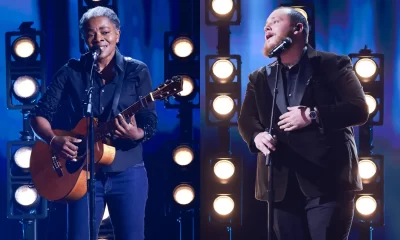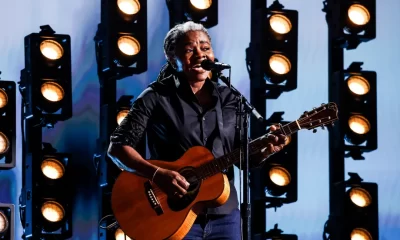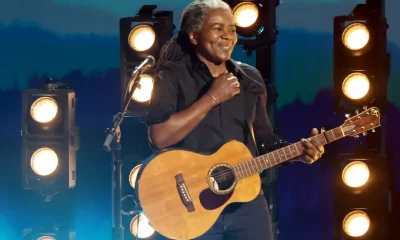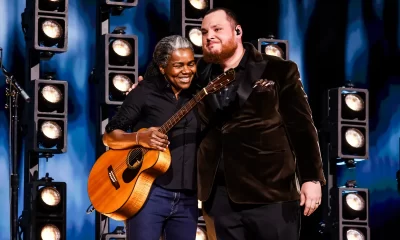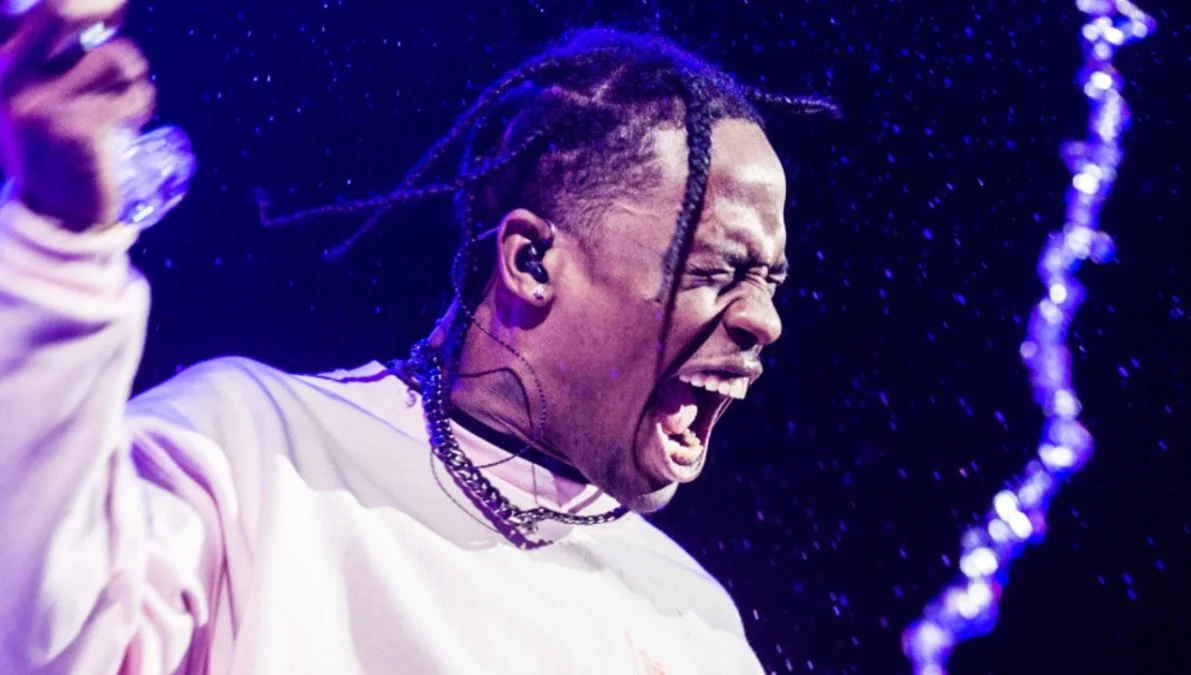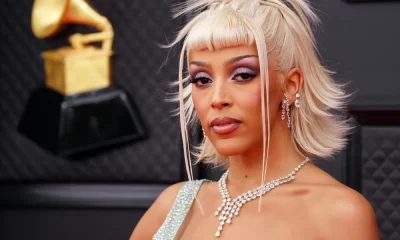ENTERTAINMENT
Get to Know the Three New Grammy Categories for 2024
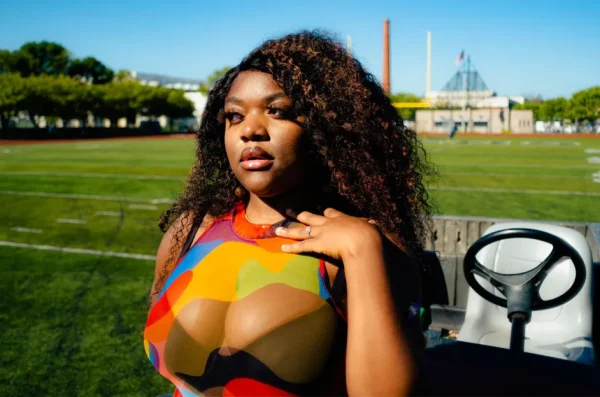
The Recording Academy has added three new categories for the 66th Annual Grammy Awards, which are set for Sunday Feb. 4, 2024 — best African music performance, best alternative jazz album and best pop dance recording. This brings the total number of categories to 94, the highest total since the number reached an all-time peak of 109 in 2010.
“By introducing these three new categories, we are able to acknowledge and appreciate a broader array of artists,” Harvey Mason jr., CEO of the Recording Academy, said in a statement. “We are excited to honor and celebrate the creators and recordings in these categories, while also exposing a wider range of music to fans worldwide.”
Here’s a closer look at the three new Grammy categories. —Paul Grein
Best Alternative Jazz Album
From swing to bebop to fusion, evolution has defined jazz throughout its history. The Grammys’ new best alternative jazz album category acknowledges that constant change, as a new generation brings the storied genre into the 21st century.
In recent years, the Grammys’ existing best jazz instrumental album category has recognized esteemed musicians of yesteryear, awarding the likes of Ron Carter, Wayne Shorter and Chick Corea — who all played with Miles Davis in the late 1960s and early ’70s. By contrast, less conventional jazz artists such as Kamasi Washington and Makaya McCraven, and bands such as Sons of Kemet and The Comet Is Coming (both led by acclaimed British saxophonist Shabaka Hutchings), have remained absent from the category’s nominees. Robert Glasper, the genre-hopping musician who has played with artists from Herbie Hancock to Mac Miller, received a single jazz category nomination in 2016, but snuck into the best R&B album category last year; his surprise win with Black Radio III caused fellow nominee Chris Brown to infamously remark: “Who the f–k is Robert Glasper?”
In its announcement of this new category, the Recording Academy noted that alternative jazz “may be defined as a genre-blending, envelope-pushing hybrid that mixes jazz … with other genres,” including R&B, hip-hop, classical, rap and dance music. As genre distinctions become less rigid, the category’s value rests in how it will allow musicians like Washington — who earned recognition outside the jazz community for his contributions to Kendrick Lamar’s 2015 album, To Pimp a Butterfly — to be honored without conforming to more traditional conceptions of jazz.
Contenders may include Dinner Party, the collaborative project of Washington, Glasper and fellow jazz-meets-hip-hop traveler Terrace Martin; Angel Bat Dawid, the clarinetist-composer signed to influential contemporary jazz label International Anthem; saxophonist Sam Gendel, a prolific puveyor of ambient jazz; and the trio comprising Vijay Iyer, Shahzad Ismaily and Arooj Aftab for Love in Exile. (Aftab was nominated for best new artist and won for best global music performance in 2022.). —Eric Renner Brown
Best African Music Performance
From Afrobeats crossover hits like Burna Boy’s “Ye” and Wizkid’s “Joro” in 2018 and 2019, respectively, to more recent smashes like Rema’s “Calm Down” and CKay’s “Love Nwatiti,” the myriad sounds of Africa have become increasingly dominant in the U.S. and U.K. mainstream markets. After the broad best global music performance category flattened the diversity of non-Western musical stylings, the Recording Academy’s new best African music performance category aims to respond to the explosive growth of the continent’s music.
In 2021, the Grammys awarded the inaugural best global music performance trophy to Arooj Aftab’s “Mohabbat” — a shock to those betting on Wizkid & Tems’ “Essence,” by far the most commercially successful song in the category. The following year, “Bayethe,” a collaboration among South African artists Wouter Kellerman, Zakes Bantwini and Nomcebo Zikode, beat out Burna Boy’s cultural and commercial juggernaut, “Last Last,” yet another marker that an adjustment was needed to properly recognize Afrobeats and its impact.
From its inception, the global music category was an attempt to recognize hundreds of genres across a plethora of languages, cultures and countries. But the rise of Afrobeats, Afro-pop and, more recently, amapiano, has become undeniable. Thanks to a Selena Gomez remix, Rema’s “Calm Down” holds the longest reign on the Billboard U.S. Afrobeats Songs chart (45 weeks and counting, as of the July 15 chart).
On the Hot 100, it peaked at No. 3. In July, Burna Boy became the first Nigerian artist to headline a U.S. stadium with his stint at New York’s Citi Field as a part of his Love, Damini tour.
The new best African music performance category seeks to honor “recordings that utilize unique local expressions from across the African continent, highlighting regional melodic, harmonic and rhythmic musical traditions.” The award will highlight subgenres including, but not limited to, Afrobeats, Afro-fusion, Afro-pop, alté, amapiano, genge, fuji, Ghanaian drill, Afro house, South African hip-hop and Ethio-jazz.
As the eligibility period draws to a close, keep an eye on these potential best African music performance nominees: “2:30” by Asake; “Sittin’ on Top of the World,” Burna Boy; “Charm,” Rema; “People,” Libianca; “Unavailable,” Davido & Musa Keys; “Soweto,” Victony; “Party No Dey Stop,” Adekunle Gold & Zinoleesky; “Reason,” Omah Lay; “Mnike,” Tyler ICU, Tumelo.za, DJ Maphorisa, Nandipha808, Ceeka RSA & Tyron Dee; and “Amapiano,” Asake & Olamide. —Kyle Denis
Best Pop Dance Recording
The Recording Academy has long attempted to cram dance and electronic music’s disparate styles into an all-encompassing pair of categories: best dance/electronic recording and best dance/electronic album. The collision of house, EDM, intelligent dance music and other subgenres has made for strange nominee bedfellows over the years — like in 2022, when Tiësto’s pop-centric crossover smash, “The Business,” competed against the delicately experimental “Loom” from Icelandic composer Ólafur Arnalds featuring Bonobo.
But nowhere has the Grammys’ dance/electronic culture war been so acute as with pop dance (or “dance pop,” as it’s more commonly called), the style that rides the line between the two genres with big melodies, center-of-attention vocals and traditional pop structures. In 2005, Britney Spears’ “Toxic” triumphed over songs like The Chemical Brothers’ “Get Yourself High” for best dance recording. While the categories started shying away from pop stars amid the EDM boom of the 2010s, the pop structures inherent to EDM presented their own challenges.
The dance screening committee, which employs a panel of experts to review submissions to the two dance categories that may be better suited elsewhere, historically struggled with where to place dance pop songs. A source on this committee says it was always hard to classify songs with, for example, a house beat but otherwise fully pop production. Which is why the Grammys have taken an overdue step in their acknowledgment of the music’s wide appeal with its addition of best pop dance recording. The change also earns the genre at large a greater Grammys presence with the addition of five more nominees.
The pop dance category would neatly fit a few early front-runners, including Illenium and the output from his self-titled rock/EDM hybrid album and Jessie Ware’s disco-infused set, That! Feels Good! The category will also likely be the new home for major pop stars making dance-centric songs, with Kylie Minogue’s thumping “Padam Padam” a contender for 2024. While the dance genre is dizzyingly eclectic, the addition of pop dance is one thing everyone can agree on. —Katie Bain
[Via]


